Ayodhya is the invincible town in India that has been existing since years. Ayodhya has been acknowledged as the Birthplace of Sri Rama and his younger brothers, Bharat, Lakshman, and Shatrughan. Owing to this fact, Ayodhya is the first of the seven most significant pilgrimage sites for Hindus around the world.
Today, Ayodhya stands strong as the symbol of righteousness with the restoration of the Ram Mandir, a revival of the age-old heritage of Ayodhya and Sanatana Dharma. Whether it was the fourteen-year-long wait of the people of Ayodhya for their beloved King Sri Rama and Devi Sita or the centuries-old wait of the Hindus for the reestablishment of the Ram Janmabhoomi temple, Ayodhya has always demonstrated a tale of love, devotion, and patience.
The Journey of Ayodhya has been long and is worth knowing. So shall we go ahead and know about this unconquerable town!?
The Tale of Ayodhya From the Corners of History
The story of Ayodhya is beyond the Politics and epics. Ayodhya, a prominent city of ancient Bharat was founded by Manu, the founder of the Ishkvaku dynasty of Kosala. According to Hindu texts, Manu was also the ancestor of Shri Rama. As per the Atharvaveda [10.2.31], Ayodhya was the capital of devas (demi-gods) during the deva-asura sangram. Moving ahead, it served as the capital for the Suryawanshi kings in whose lineage God Vishnu took birth as Shri Ram.
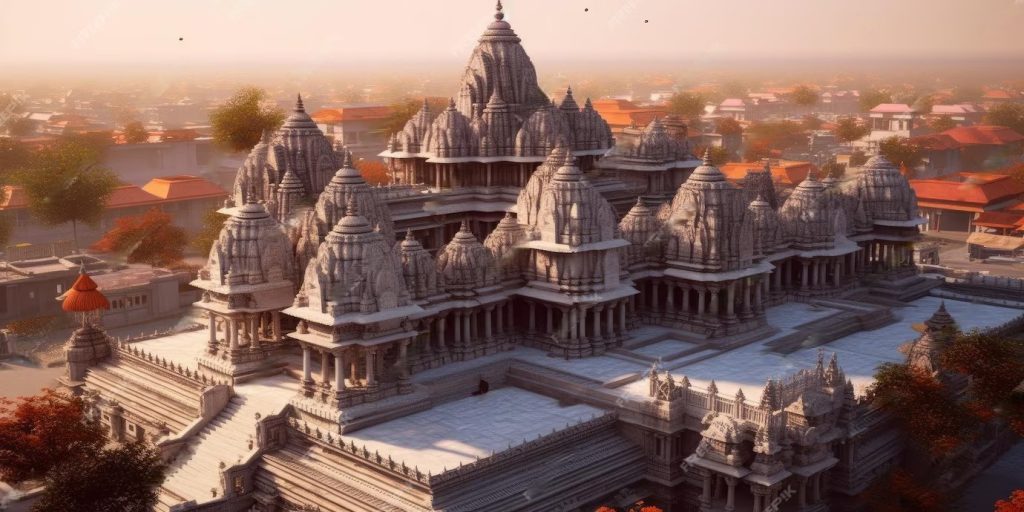
Shri Ram was the 61st ruler of the Suryawanshi dynasty of Ayodhya. After him, his descendants continued to rule the Kingdom but over time Ayodhya was abandoned by the descendants of the Raghuvanshi dynasty. King Sumitra is known to be the last Raghuvanshi king of Ayodhya. The decline of Ayodhya coincided with the advent of the Dwaparayuga, the age when the great War of Mahabharata took place. According to Hindu beliefs, the age that we live in today is called the Kali-yuga.
According to Historian Hans Baker, Ayodhya is one of the oldest cities in India, as old as Kashi. The city was known as Saketa from 600-200 BCE. The word “Saketa” is derived from the Sanskrit words Saha (with) and Aketan (houses or buildings). The Adi Purana states that Ayodhya is called Saketa because of its magnificent buildings and houses.
As the trade flourished in Bharatvarsh during the second urbanization period, Saketa (Ayodhya) became the intersecting point for the two trade routes that emerged during that time- Dakshinpatha (connecting Rajgir in Bihar to Pratisthana in the south) and Uttarpatha (connecting Pataliputra a.k.a. Patna to Takshila near present-day Peshawar in present-day Pakistan).
As time passed by, new religions and philosophies began to emerge. Wandering ascetics traveled across Bharatvarsh to preach these philosophies. This movement came to be known as the Sramān movement. Saketa, an important trading and residing town for merchants also attracted a lot of preachers and philosophers. The Buddhist canonical texts also mention the visitation of Gautama Buddha to Saketa several times. As a result, Saketa had several Buddhist stupas with Buddhist relics as well as Jain temples. This includes the great temple of Adinath, the first Jain Tirthankara. Unfortunately, these were all destroyed during the medieval era.
The Seven Mighty Kings of Ayodhya
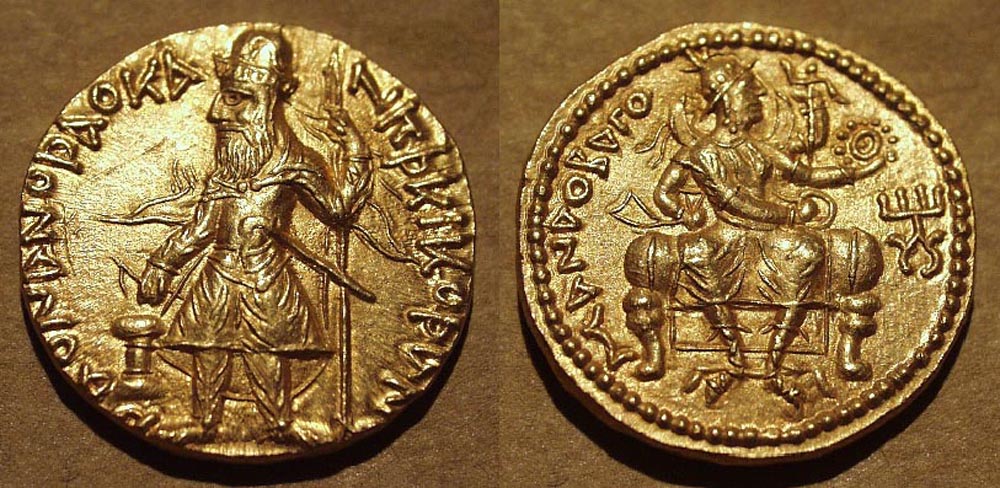
Three of the Hindu Puranas, a religious text written in the Gupta period – The Yuga Purana, the Vayu Purana, and the Brahmanda Purana- talk about the rule of the “Seven mighty kings of Saketa” who ruled the region after the retreat of the Indo-Greeks from Northern India. The authenticity of these seven kings of Saketa is confirmed by the numismatic evidence gathered from the discovery of the coins of the Kings found in the Faizabad district of Uttar Pradesh. From the coins, the names of at least five kings were Fuladeva, Vayudeva, Visakhadeva, Pathadeva, and Dhandeva.
In the 2nd century CE, Saketa came under the rule of The Kanishka, the Emperor of the Kushana empire. Kanishka, in his Rabatak Inscriptions in Afghanistan, proudly claims his rule in the city of Saketa, Kausambi, Pataliputra, and Sri-cāmpa along with the whole of the realm of the Kshatriyas. However, the city of Saketa regained its significance with the rise of the Gupta empire.
Also Read: Explore the Ghats of Varanasi – Uttar Pradesh
Gupta Empire and the Rise of Ayodhya
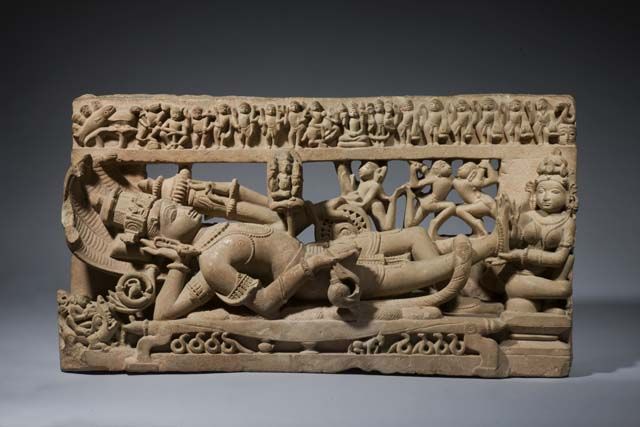
In the late 3rd century CE, the onset of the Gupta empire began. This period is referred to as the golden period in the history of India. Saketa too saw the revival of itself during the Gupta age. The period witnessed the revival of Sanatana Dharma or Hinduism across the subcontinent. Several Hindu temples dedicated to Hindu deities were built in the Nagara style. In the fifth century CE, Saketa began to be called Ayodhya and was recognized as the capital of the Ishkvaku kings from the treta yuga.
Skandagupta Vikramaditya (455-467 CE), one of the most celebrated rulers of the Gupta dynasty is credited with having renovated the city of Ayodhya and made it his capital when floods had ravaged the town of Pataliputra. Vikramaditya is also credited with having built the original Ram Janmabhoomi temple with 360 other Hindu temples in Ayodhya. Post the decline of the Guptas, Ayodhya was again sidelined by the History. However, the association of Ayodhya and Ramayana continued to flourish amidst the era of invasion through the Bhakti movement.
The Canard of the Ram – Janmabhoomi Temple
The entire country is contentedly waiting for the Auspicious day of the 22nd of January when the Pran-pratishtha ceremony of Shri Ram-janmabhoomi temple. However, the journey to the Ram-janmabhoomi temple has been a long and challenging one.
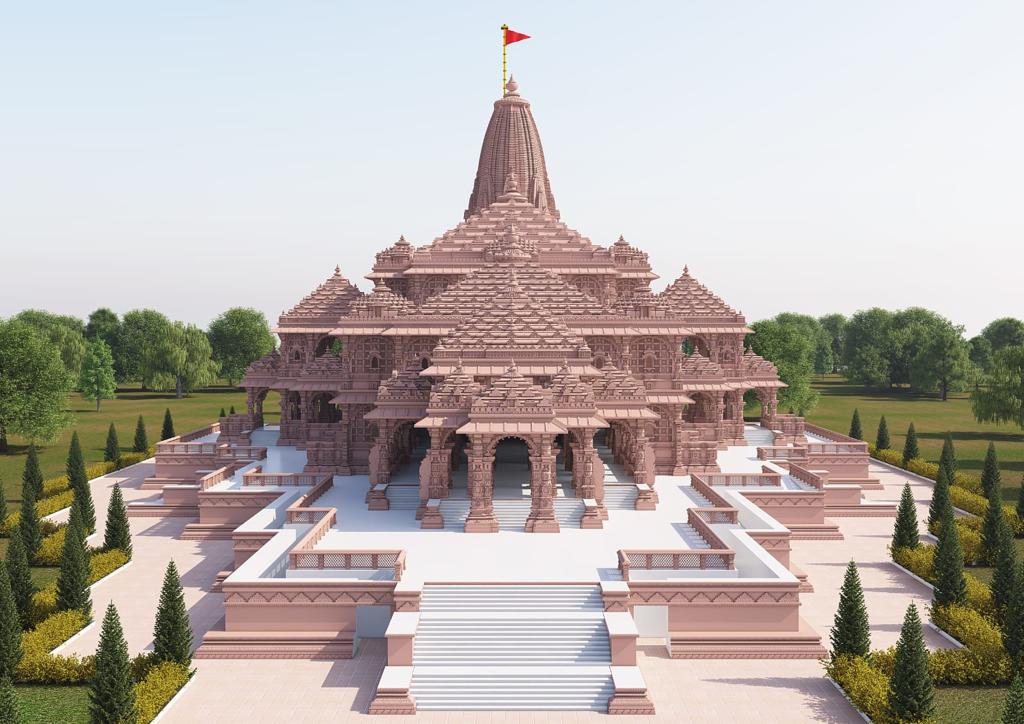
The story of Ram janmabhoomi began when the temple was first constructed by Emperor Vikramaditya. The temple had 84 pillars made of kasuati stone. The temple was built along with 360 other temples. The temple stood their for centuries until in the 15th century the temple was demolished by the Mir Baqi, the general of Mughal ruler Babur. The Ramjanmabhoomi temple was demolished and on its place, the Babari Mosque was constructed.
Nearly three centuries later the Ramjanmabhoomi temple dispute began, when Mahant Raghubir das gave a plea in the faizabad court for building a temple in the land adjacent to the mosque. However, his plea was rejected. The dispute was then followed by q series of events that include the appearance of Shri Ram’s idol inside the mosque in 1949, suits filed from each side and the commencement of Shri Ram janmabhoomi temple in the year 1984 by the Vishwa Hindu Parishad. BJP leader Lal Krishna Advani became the leader of the movement. Later on, in 1989, Rajiv Gandhi, the then prime minister of India allowed the VHP to do the Shilanyas (laying the foundation stone) near the disputed area. In 1990, Lal Krishna Advani launched a Rathyatra from Somnath in Gujarat to Ayodhya to gain support for the movement. However, it led to communal violence. Later in the year 1992, the Karsevaks had raged the Babri masjid on December 6. This particular event became the turning point in the course of the Ramjanmabhoomi temple.
Following years, the dispute was fought in the Supreme court. Several attempts were made to deny the presence of Ramjanmabhoomi temple, or even the existence of Shri Ram. However, the attempts went futile and at the end righteousness prevailed. On November 9th 2019, the Supreme court of India gave the historic judgement to give the Disputed land back to Hindus in order to build the Ramjanmabhoomi temple. The Supreme court also ordered to allot 5 acres of land for the construction of a mosque.
On 5th August 2020, The current Prime Minister of India, Shri Narendra Modi did the Bhumi pujan and laid the foundation stone for the Ram Mandir in Ayodhya.
Now, On the upcoming 22nd January, the Pran pratishtha ceremony of Shri Ramjanmabhoomi temple will take place marking a new beginning in the sage of Ayodhya.
The Ram Janmabhoomi temple is built in Nagara style containing three floors. The temple is built in traditional Hindu style using the ancient shilp-kala. The temple contains three floors with each floor being 20 feet high. In the main sanctum sancrotum, the idol of Ram lalla (the toddler form of Shri Ram) is going to be kept. In the first floor, there is going to be Shri Ram darbar. Interestingly, the idol of Shri Ram and Devi Sita is carved from the Shaligram stone that has been brought from the Gandaki river of Nepal.
The Ram temple complex has four corners, each dedicated to God Surya, Devi Bhagwati, God Ganesh and God Shiva. The Northern arm of the temple has a temple dedicated to Devi Annapurna, whereas the southern arm has a temple dedicated to God Hanuman. In the Ram mandir complex, there are temples proposed for Maharishi Vishwamitra, Devi Shabri, Nishad raj, Maharshi Vashishtha, Maharshi Valmiki, Maharishi Agastya and Devi Ahilya. These people played an important role in the epic Ramayana.
Near the Temple, there is a Historic well known as Sita kund that belongs to the ancient era. In the southwestern side, there is an ancient temple dedicated to God Shiva that has been restored along with the installation of Jatayu’s statue. The Architecture of Ram Mandir complex truly embodies the essence of Ramayana and Sanatana Dharma in itself. From 23rd of January, the temple will be open for devotees.
Places to visit in Ayodhya
Beyond the Ram-janmabhoomi temple, Ayodhya has several other places that have been standing here for years now. Being a religious town, Ayodhya has been bestowed with hundreds of temples that were built by several rulers across Indian history. Visiting Ayodhya would be incomplete unless one visits these places and witnesses the holiness of the town. Here are some places that one must visit when traveling to Ayodhya:
1. Hanumangarhi
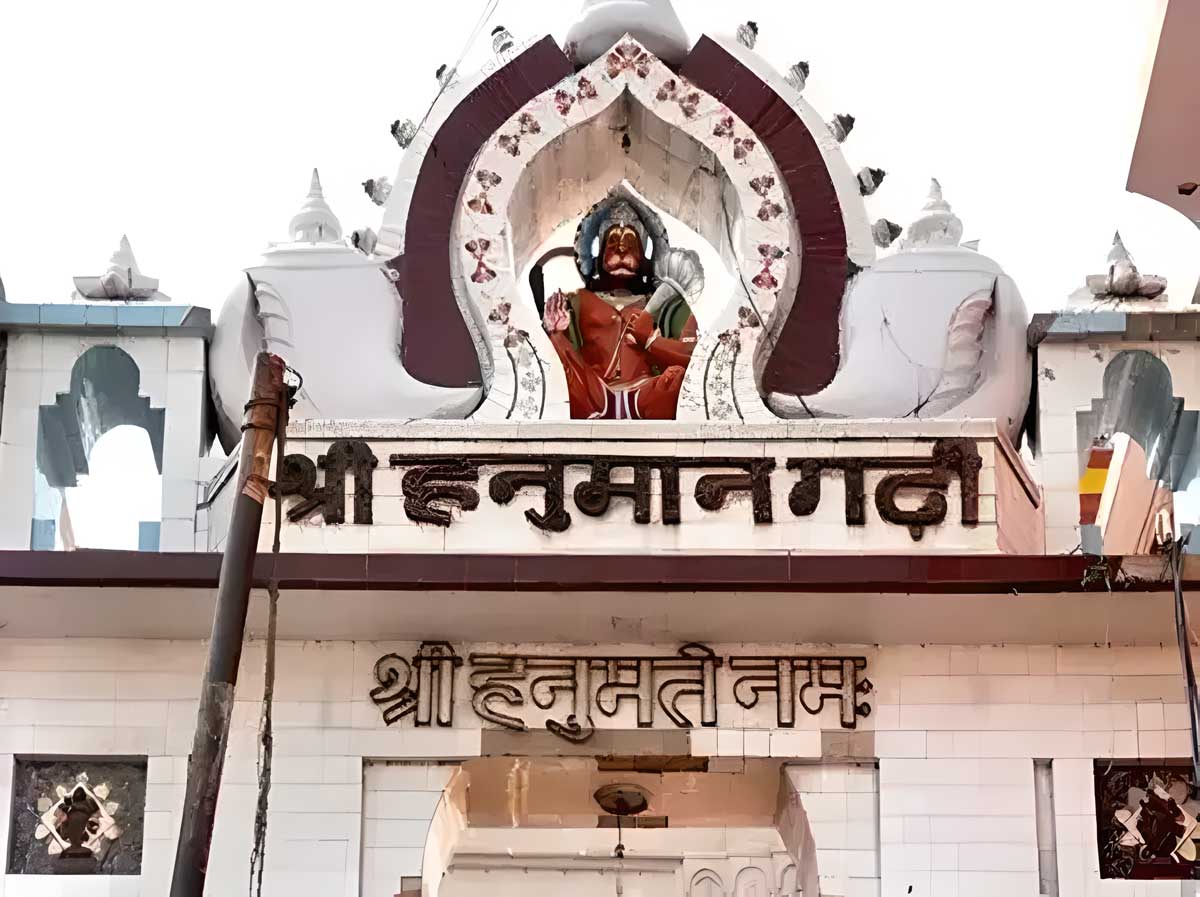
Hanumangarhi, also known as Siddha peeth temple devoted to Lord Hanuman. According to Skandapurana, the Hanumangarhi temple was built by King Vikramaditya along with 360 other temples. The temple is currently under the charge of Bairagi mahants of Ramanandi sampradaya and Nirvani akhada. It is the tallest temple in the Ayodhya. The presiding deity, God Hanuman is a great devotee of Shri Ram and has been protecting Ayodhya since ages. It is believed that worship to Shri Ram is incomplete unless one takes the blessings of God Hanuman in the Hanumangarhi temple.
Here, God Hanuman is presiding with his mother, Devi Anjani. It is a place where every desire of devotees are fulfilled by God Hanuman. Also, devotees are required to take God Hanuman’s permission before washing their sins in the Sarayu River. Recently, the Laddus of Hanumangarhi temple which are served as prasad in the temple has received the GI tag, a global certificate that shows that the goods are a unique representation of its location, culture and customs.
2. Treta ke Thakur
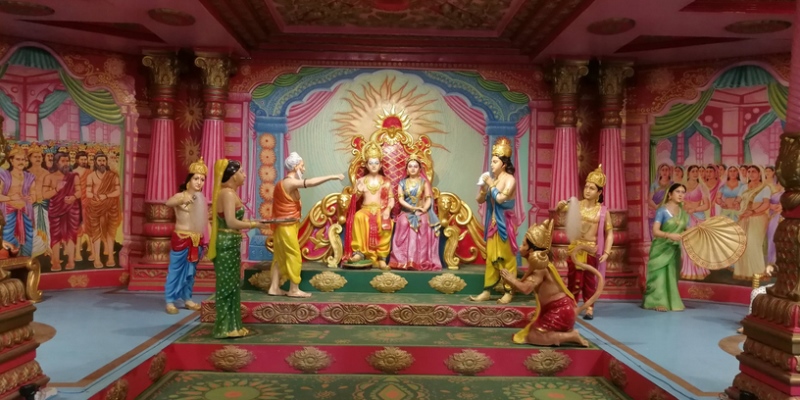
Dedicated to God Shri Ram who is referred as the Lord of tretayug, the second out of the four ages of Mankind according to Hinduism. The temple is located at Naya ghar in the Sarayu River and was built by the King of Kullu 300 years ago. The temple was later renovated by the Maratha queen Ahilyabai Holkar. It is said that this was the exact place where Sri Rama had conducted the Ashwamedha Yagya. The temple also houses the idols of Devi Sita, God Lakshman, God Hanuman and other deities from the Ramayana. These idols have been carved out of a single black stone. The temple is opened only once in a year on the day of Kartik Shukla Ekadashi that falls in the month of October and November.
Also Read: 12 Most Famous Cuisines of Uttar Pradesh- You Must Try!!
3. Ramkot Temple
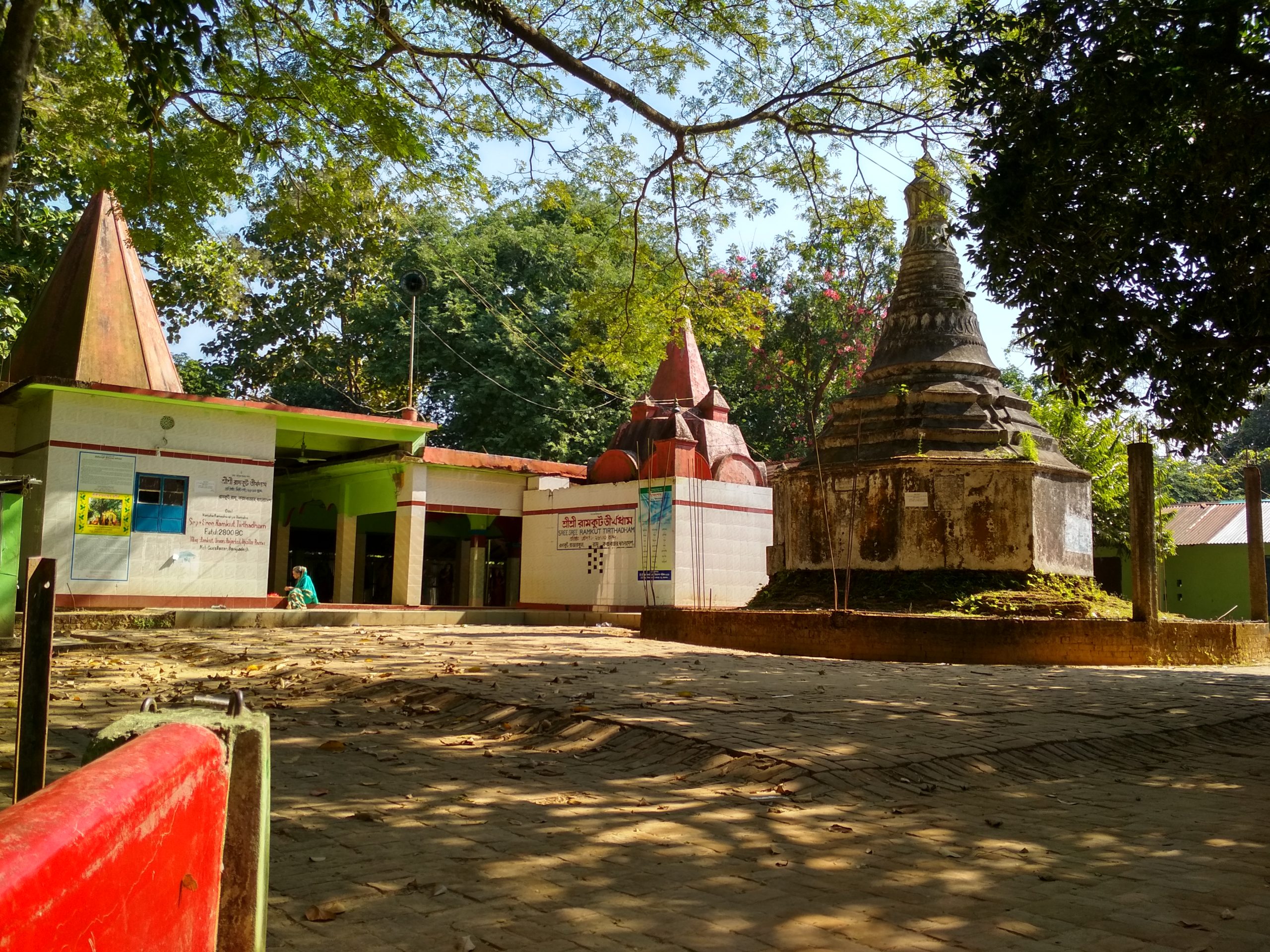
Situated at the top of a hill, The Ramkot temple is the prominent place of worship in Ayodhya. Survived as an ancient citadel, and as per popular beliefs, this place marks the site of Shri Ram’s fort. During Ram navami, the birth anniversary of Shri Ram, various cultural events are organised in the temple to celebrate the occasion with great enthusiasm. The event and celebration make for an interesting experience altogether. Being located on the top of a hill, the temple offers sweeping panoramic view of the entire city, including its Temples and Ghats. There is a saga that God Hanuman would guard this citadel from a secret cave. The temple can be visited from 7 AM to 11 AM and then from 2 PM to 6 PM.
4. Sita ki Rasoi
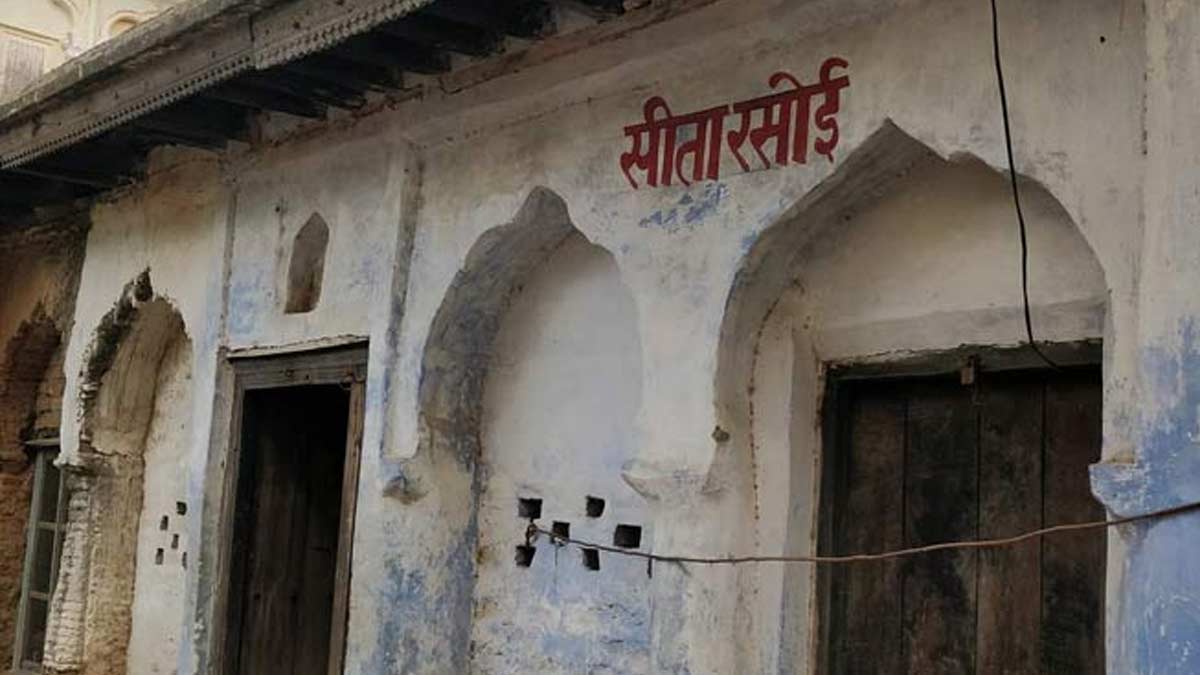
In the Northwestern side of the Ram-janmabhoomi, there is siad to be a Historic kitchen that belonged to Devi Sita. On this sacred place, there now stands a temple with several vessels kept on display. Inside the temple, there presides the exquisitely dressed and ornamented idols of Shri Ram, Lakshman, Bharat and Shatrughan along with their respective wives Devi Sita, Urmila, Mandvi and Shrutkirti.
Sita ki Rasoi is thought to be a centuries old kitchen that Devi Sita herself used. Devi sita, the incarnation of Goddess Lakshmi was called devi Annapurna (Goddess of food) when she fed food to five ascetic sages. The temple still follows this tradition and continues to feed the needy ones. Besides the Sita ki Rasoi, there is also a Janaki Kund nearby which is believed to be where Devi Sita used to take bath everyday.
5. Kanak Bhawan
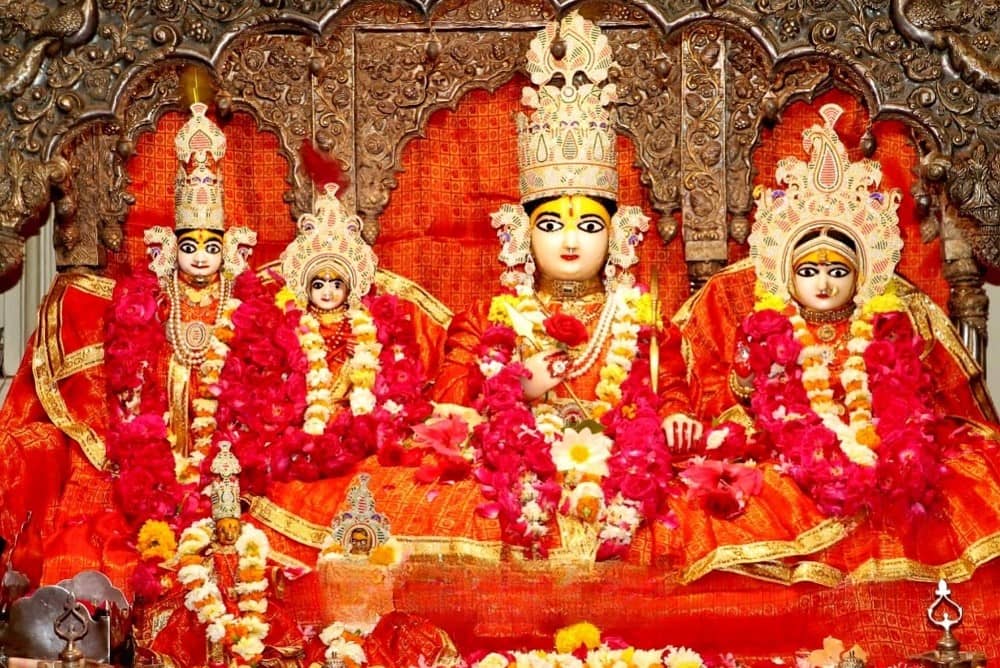
Kanak Bhawan, situated in the north east of Ram Janmabhoomi temple in Ayodhya was a gift from Mother-in-law to her daughter-in-law upon her arrival. The Kanak Bhawan was a private palace of Shri Ram and Devi Sita gifted to her by Kaikeyi. Today it stands as a beautiful temple with the idols of Shri Ram and Devi Sita in its Garbhagriha (sanctum sanatorium).
Also Read: Religious Visit to Birla Mandir at Jaipur – My Travel Dairy
6. Sugreeva Kila
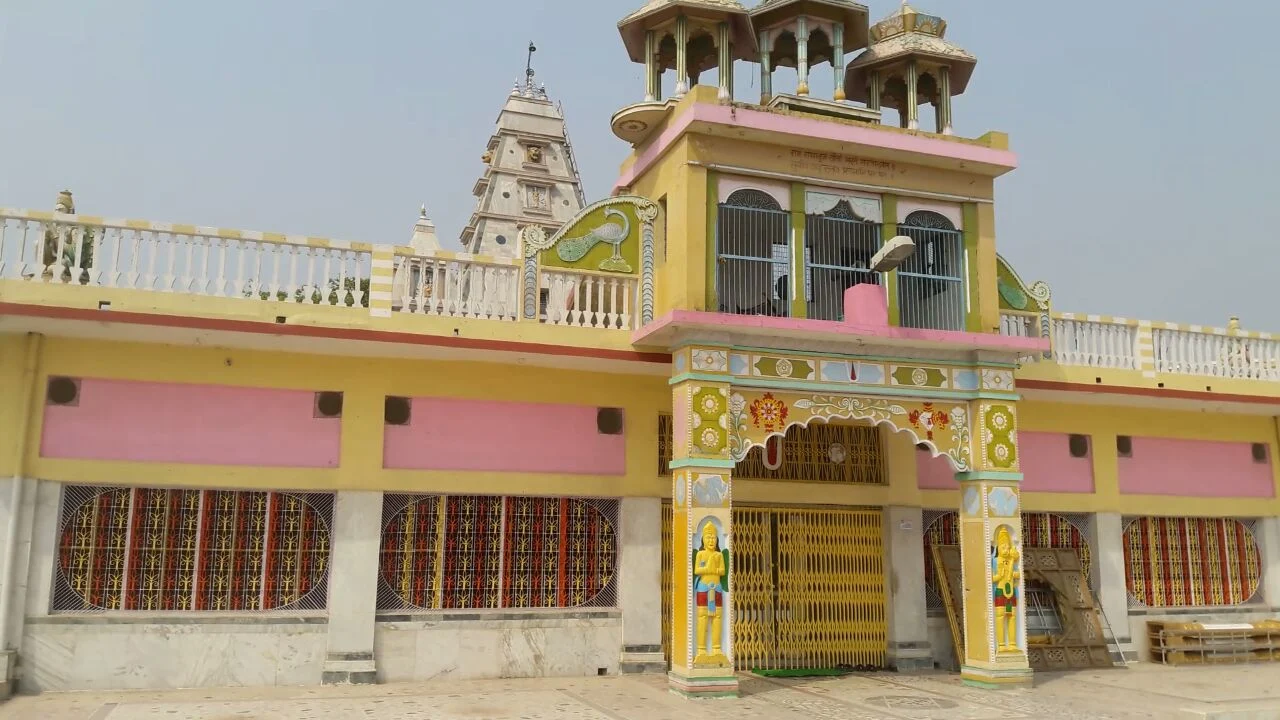
Built by Bharath upon the return of Shri Ram in Ayodhya, the Sugreeva Kila is an engrossing place where the folk tales meet with actuality. Here Sugreeva, the dearest friend of Shri Ram and God Hanuman is worshipped along with Shri Ram, Devi Sita, Lakshman, Bharat and Shatrughan. It is an extraordinary place where the devotees tell about how enemies are destroyed by visiting this place. The Fort, which was gifted by Shri Ram to Sugreeva, was renovated by Vikramaditya during the restoration of Ayodhya.
7. Nageshwarnath temple
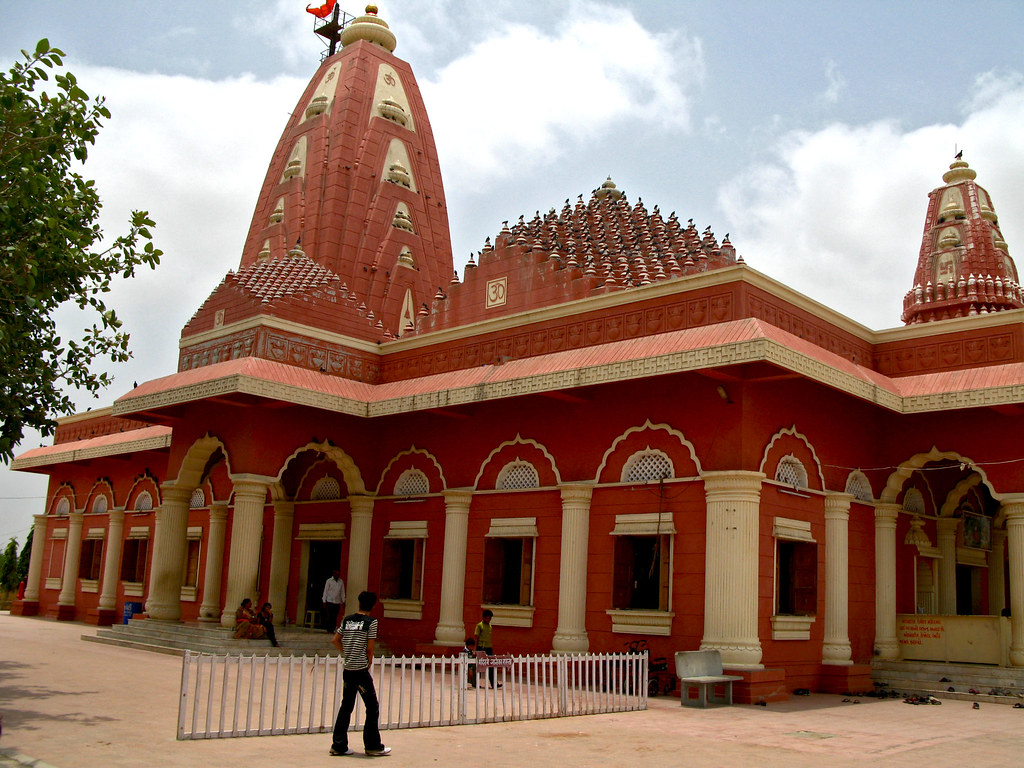
Dedicated to God Shiva, the Nageshwarnath temple is one of the oldest and prominent temples of Ayodhya. The temple was established by Kush, the elder of son of Shri Ram and Devi Sita. The tales goes like when Kush was taking a dip in the Saryu River, he had lost his armlet which was then relieved by a Nag-kanya named Kumudini.
After a series of events, Kush and Kumudini get married an as She was an ardent devotee of God Shiva, Kush had erected the Nageshwarnath temple for her. Surprisingly, this was the only temple that survived till the time Ayodhya was renovated. Every year, on Mahashivratri, there is a pompous celebration that takes place.
8. Ram ki Paidi
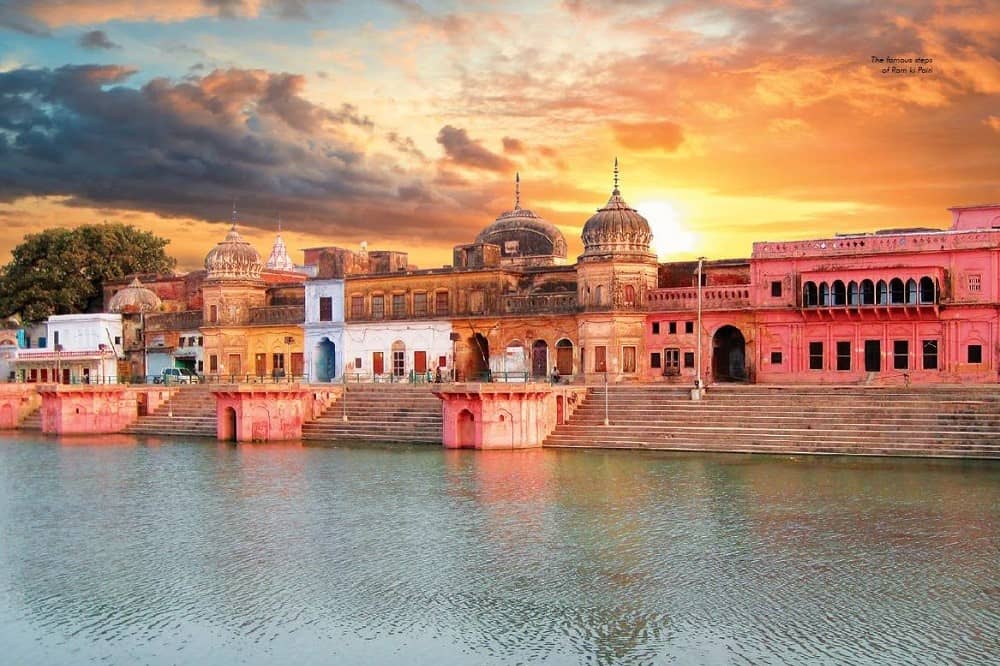
Ram ki Paidi is a series of Ghats that are set on the banks of the Sarayu River. The Sarayu River which has witnessed several events during the course of its time. From the birth of Shri Ram, the arrival of Devi Sita as the daughter-in-law of Kosala, Shri Ram going to exile, his arrival after 14 years, coronation of Shri Ram as the King if Ayodhya and at last, Shri Ram went to his abode in Vaikuntha through the Sarayu River.
The Sarayu River was blessed by Shri Ram himself. Devotees come here everyday to take a dip and wash their sins. It is considered a sacred and purifying act. One of the Major highlight of Ram ki Paidi is the Saryu aarti that takes place in the evening. It is an alluring and fascinating ritual that takes place against the backdrop of beautiful sarayu River and the illuminated temples. Sitting near the Ghat during the aarti gives the devotees immense peace of mind and let them experience the divinity of Ayodhya.
Also Read: 14 Most Famous Religious festivals of India
9. Choti chawani
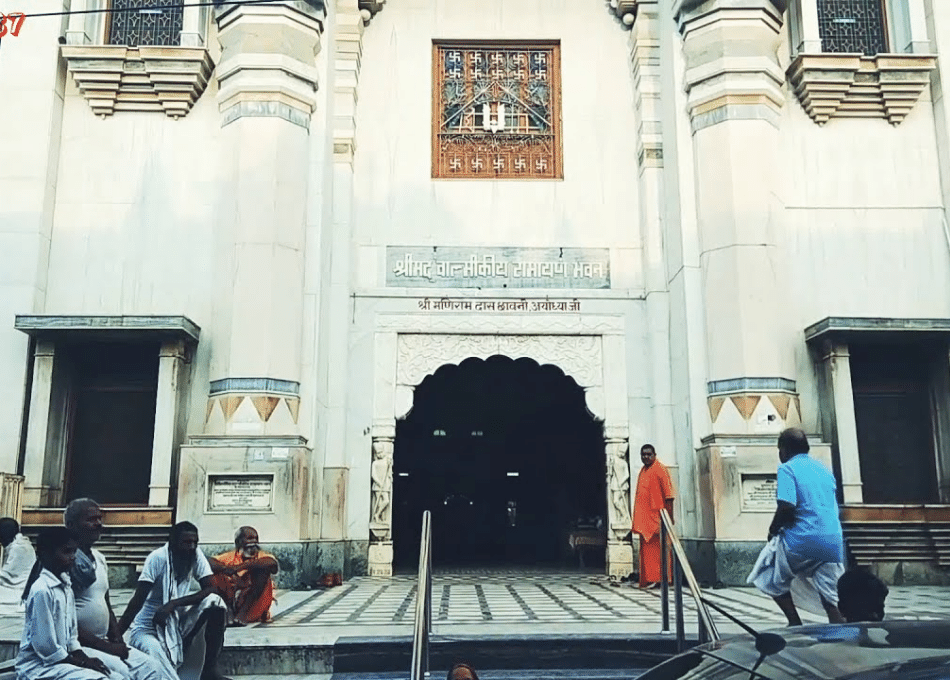
Choti Chawni also known as Valmiki Bhawan or Maniramdqs Chawani is a magnificent structure in Ayodhya. It is built entirely of white marble making it an alluring and elegant beauty. In Ayodhya it is a must visit place. It contains 34 caves in which 12 in the south direction are dedicated to Buddhism, 17 in the center are dedicated to Hinduism and 5 in the North are dedicated to Jainism. Thus, it is an elaborate amalgamation of the different philosophies and culture that have emerged in India.
10. Dashrath Mahal
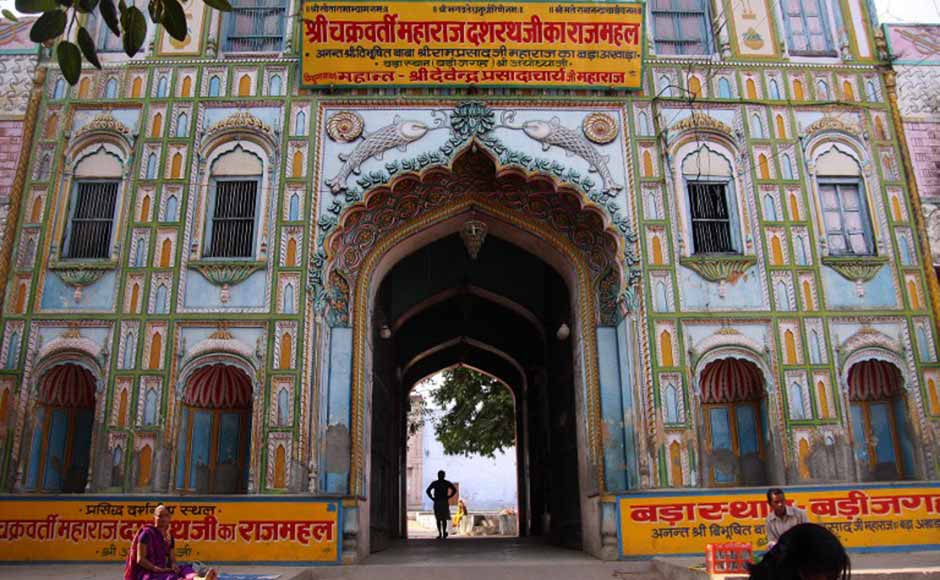
Situated at at distance of 100m from the Hanumangarhi temple. It is said that here King Dashrath used to reside along with his family. This is the same palace where Shri Ram had spent his childhood. The Dashrath Mahal has been renovated recently and is about to witness the return of Shri Ram in Ayodhya on the 22nd of January.
11. Tulsi Smarak Bhavan
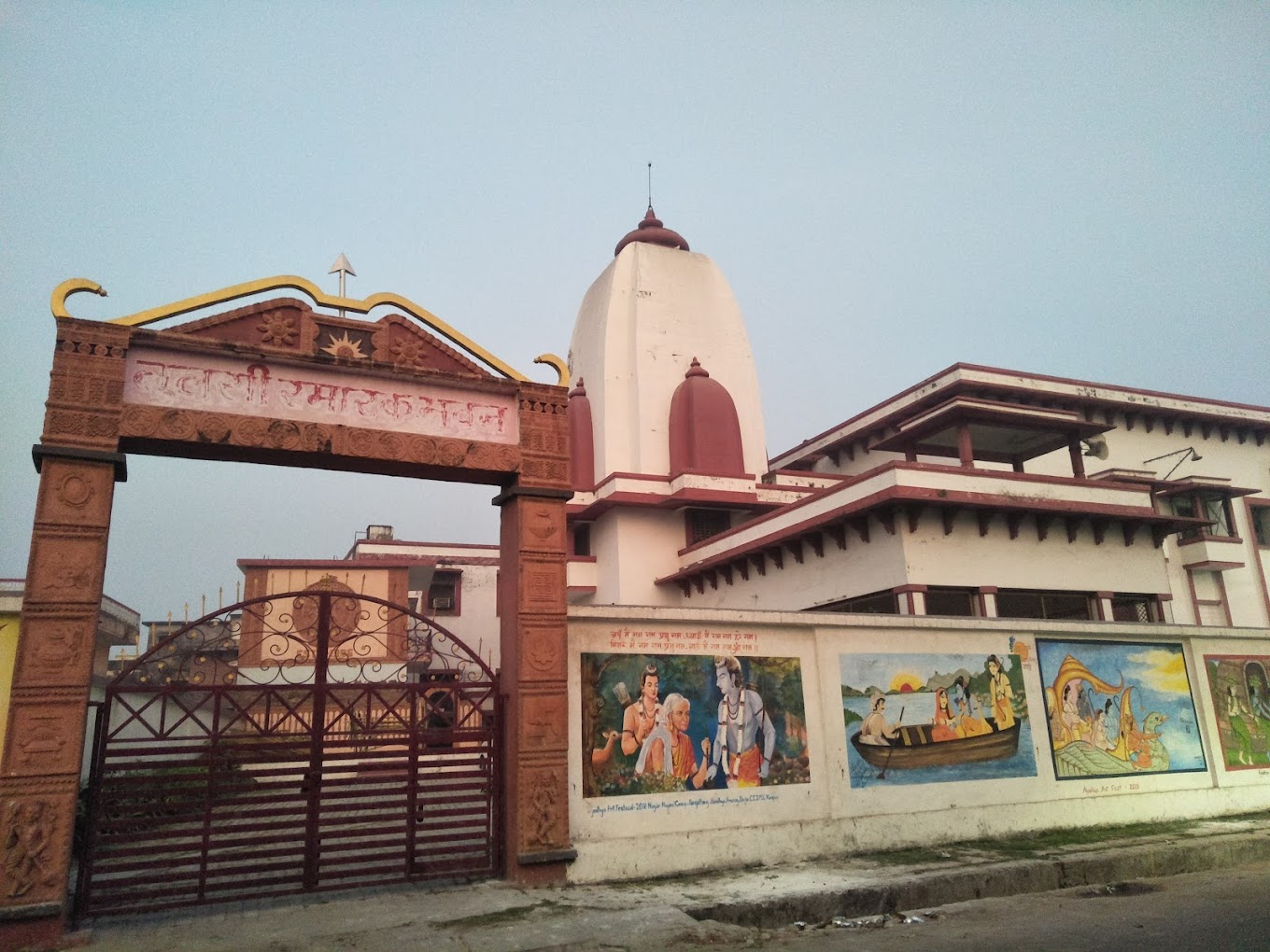
Dedicated to the great Saint-poet Goswami Tulsidas, who was also a great devotee of Shri Ram. Goswami tulsidas is credited for composing Ramcharitmanas, a text on Ramayana, that focuses on Shri Ram’s character in awadhi language. He is also credited for writing the Hanuman Chalisa. The Tulsi smarak bhavan was constructed in 1969 by the initiative of Shri Vishwanath Das ji, the then governor of UP in the memory of Tulsidas ji.
The smarak complex houses a number of structures such as the Ayodhya shodh sanatan- a research institute, a big library which carries immense value for historians and scholars and a Ram katha sanghralaya that aims to preserve and present the antiquities associated with tale of Shri Ram. The Bhawan also performs a Ramleela everyday from 6:00 PM to 9:00 PM that forms a major attraction for the visitors.
Souvenirs to get in Ayodhya
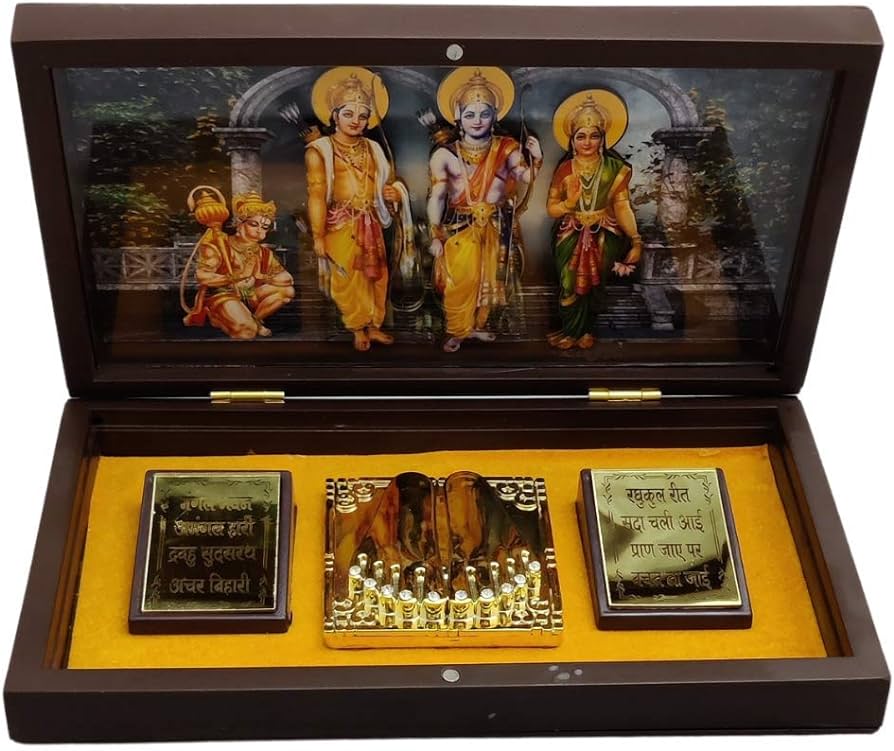
Every year Ayodhya attracts thousands of pilgrims from across the country and the world. Astonishingly, Many of these pilgrims are also attracted to Ayodhya because of its locally made Maharaja Chandan used for tilak in the Hindu religion. Maharaja Chandan is a regionally manufactured sandalwood prepared using turmeric, sandalwood, and some other secret ingredients. It holds major significance due to its Auspiciousness as a tilak used in worshipping God Vishnu and his incarnations.
These sandalwood pastes are applied by Saints and devotees as well. Besides Maharaja Chandan, Mailkota Chandan, Shri Chandan, Ramraj Chandan, Jankiraj Chandan, and Gopiraj Chandan are manufactured in Ayodhya. Each of these sandalwood pastes has different sources and purposes. The Mailkota Chandan is especially used by the people belonging to the Vaishnav Sampradaya. In the Ramraj Chandan, The soil from the Ram Janmabhoomi is mixed. Similarly, the soil from Mithila, Devi Sita’s birthplace, and the soil from Vrindavan are mixed with the Jankiraj Chandan and Gopiraj Chandan respectively.
Ayodhya’s sandalwood is so popular that people from other religious towns also arrive in Ayodhya just for the sake of buying these sandalwood pastes. These sandalwood pastes are sold in different ranges beginning from ₹200 per KG. They are a major source of income for several residents who have established their shops in the periphery of Hanumangarhi and Ram ki paidi for generations now. Besides Sandalwood, visitors can also take several mementos back home from Ayodhya. This includes the idols of Shri Ram, Devi Sita, Shri-ram darbar, Shri Ram charan-paduka made of wood and brass.
Also Read: Explore 20 Most Popular Religious Sites In India
How to Reach Ayodhya?
Owing to the ever-increasing will of the devotees to reach Ayodhya as early as possible, it is important to know the best feasible ways to reach Ayodhya. Recently, the city got its Airport known by the name Maharishi Valmiki International Airport, Ayodhyadham.
The name pays homage to Sage Valmiki, who is credited with the composition of the Mahakavya, The epic Ramayana. The Airport started its operation on the 6th of January 2024. Other than the sage Valmiki airport, the Chaudhary Charan Singh International Airport in Lucknow is the nearest airport to reach Ayodhya.
Furthermore, Visitors can reach Ayodhya through Railways. Ayodhya has a Railway station on the northern line, people can take direct train from any of the major cities to reach Ayodhya.
Several trains like Vande Bharat (from Delhi to Ayodhya), Doon express (Varanasi to Ayodhya), Kaifiyat express (Delhi to Ayodhya) can be fet he’d to reach Ayodhya comfortably.
One of the adventurous ways to reach Ayodhya is by Roadways. Devotees can fetch a private vehicle or bus to reach Ayodhya by Road. The state government also runs an Uttar Pradesh state road transport cooperation buses regularly between Ayodhya and other major cities like Lucknow, Faizabad and Gorakhpur.
For those who live outside India, visitors can travel to New delhi’s Indira Gandhi International Airport or Mumbai’s Chhatrapati Shivaji Maharaj international Airport and then fetch a train or flight to Ayodhya.
Conclusion
At last, the Ayodhya is again going to welcome the arrival of her King. The day for which this city had waited for several centuries is finally going to come. So, don’t wait more, pack your bags, visit Ayodhya and immerse yourself in the divinity and blessings of Devi Sita and Shri Ram.
Frequently Asked questions
When in the right time to visit to travel Ayodhya?
For Devotees there is never a right time to travel Ayodhyadham. Whenever they feel the urge to see their God and take his blessings, they visit Ayodhya. However, the Hindu months of Chaitra (March-April) and Kartik (October-November) are two Auspicious times to visit the Ayodhyadham to feel the divinity of Shri Ram.
What are some street food delicacies to try in Ayodhya?
Ayodhya offers a variety of food options. In Ayodhya you will find delicacies like Samosa chat, Aloo Tikki, Kachori, Jalebi, Rabdi, Puri sabzi etc etc.
How many days it will take to travel Ayodhya?
It will not take more than two days to visit the whole city of Ayodhya. There are several small and large temples along with Ghats and smaraks that will take around an hour each to explore.
What are some travel tips before visiting Ayodhya?
Book your tickets regardless of the mode of transportation chosen. Choose sleeper berths in train and A/C buses for overnight journeys and hotter months. Dress modestly when visiting religious sites. Try to respect and follow the local customs.

